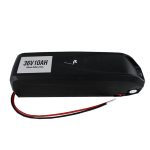
Introduction
LiFePO4 chemistry lithium cells have become popular for a range of applications in recent years due to being one of the most robust and long-lasting battery chemistries available. They will last ten years or more if cared for correctly. Please take a moment to read these tips to ensure you get the longest service from your battery investment.
Tip 1: Never over charge/discharge a cell!
The most common causes for premature failure of LiFePO4 cells are overcharging and over-discharging. Even a single occurrence can cause permanent damage to the cell, and such misuse voids the warranty. A Battery protection System is required to ensure it is not possible for any cell in your pack to go outside its nominal operating voltage range,In the case of LiFePO4 chemistry, the absolute maximum is 4.2V per cell, though it is recommended that you charge to 3.5-3.6V per cell, there is less than 1% extra capacity between 3.5V and 4.2V.
Over charging causes heating within a cell and prolonged or extreme overcharging has the potential to cause a fire. AIN Works Takes no responsibility for any damages caused as a result of a battery fire.
Over charging may occur as a result of.
- Lack of a suitable battery protection system
- Faulty of infective battery protection system
- incorrect installation of the battery protection system
AIN Works takes no responsibility for the choice or use of a battery protection system.
At the other end of the scale, over-discharging can also cause cell damage. The BMS must disconnect the load if any cells are approaching empty (less than 2.5V). Cells may suffer mild damage below 2.0V, but are usually recoverable. However, cells which get driven to negative voltages are damaged beyond recovery.
On 12v batteries the use of a low voltage cutoff takes the place of the BMS by preventing the overall battery voltage going under 11.5v no cell damage should occur. On the other end charging to no more than 14.2v no cell should be overcharged.
Tip 2: Clean your terminals before installation
The terminals on top of the batteries are made from aluminum and copper, which over time builds up an oxide layer when exposed to air. Before installing your cell interconnectors and BMS modules, clean the battery terminals thoroughly with a wire brush to remove oxidation. If using bare copper cell interconnectors, these should be cleaned too. Removing the oxide layer will greatly improve conduction and reduce heat buildup at the terminal. (In extreme cases, heat buildup on terminals due to poor conduction has been known to melt the plastic around the terminals and damage BMS modules!)
Tip 3: Use the right terminal mounting hardware
Cells using M8 terminals (90Ah and up) should use 20mm long bolts. Cells with M6 terminals (60Ah and under) should use 15mm bolts. If in doubt, measure the thread depth in your cells and ensure that the bolts will get close to but not hit the bottom of the hole. From top to bottom you should have a spring washer, flat washer then the cell interconnector.
A week or so after installation, check that all your terminal bolts are still tight. Loose terminal bolts can cause high-resistance connections, robbing your AIN of power and causing undue heat generation.
Tip 4: Charge frequently and shallower cycles
With lithium batteries, you will get longer cell life if you avoid very deep discharges. We recommend sticking to 70-80% DoD (Depth of Discharge) maximum except in emergencies.
Swollen Cells
Swelling will only occur if a cell has been over-discharged or in some cases overcharged. Swelling does not necessarily mean the cell is no longer usable though it will likely lose some capacity as a result.
If you need LifePO4 Batteries
Please contact us on +86-15156464780, or email ਐਂਜਿਲਿਨਾ@ਇਨਬੈਟਰੀ.ਕਾੱਮ



